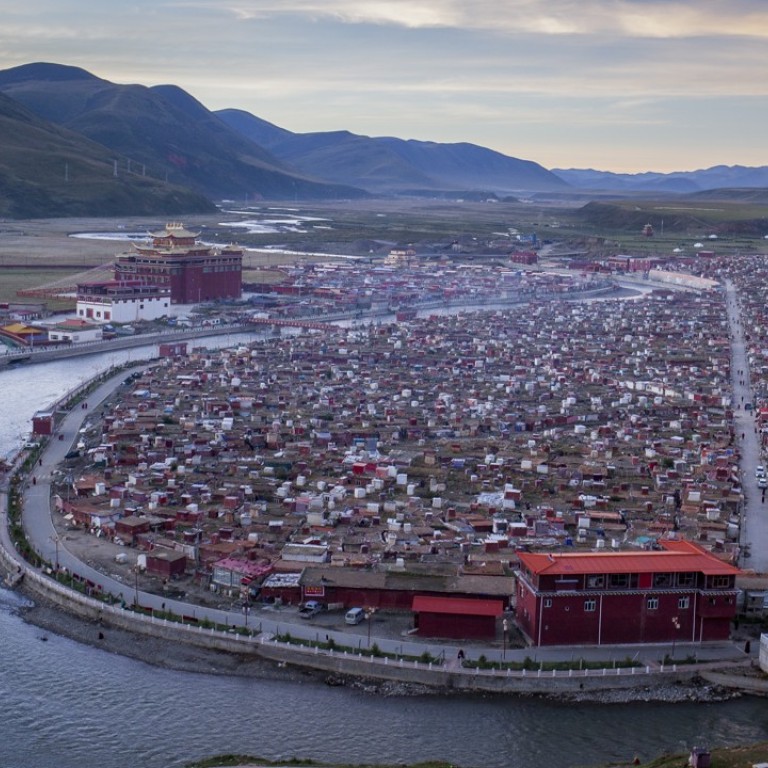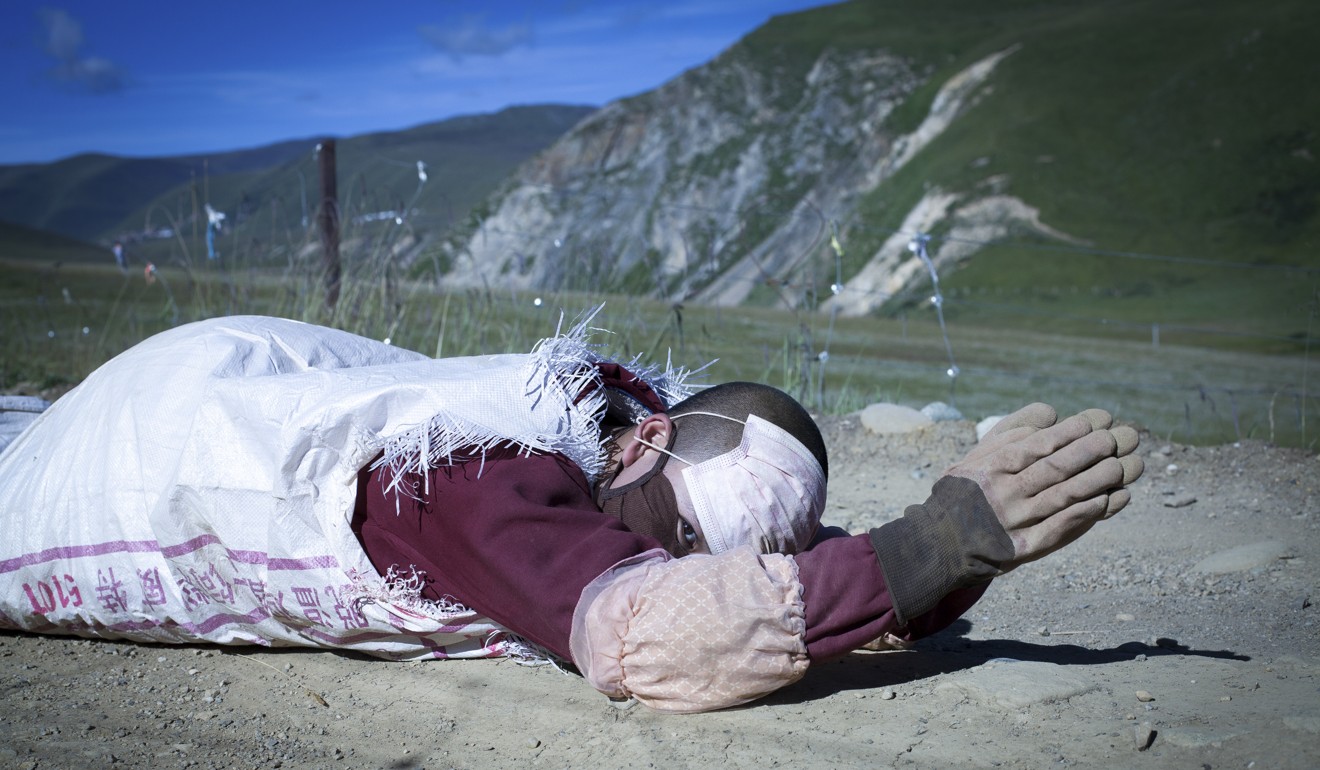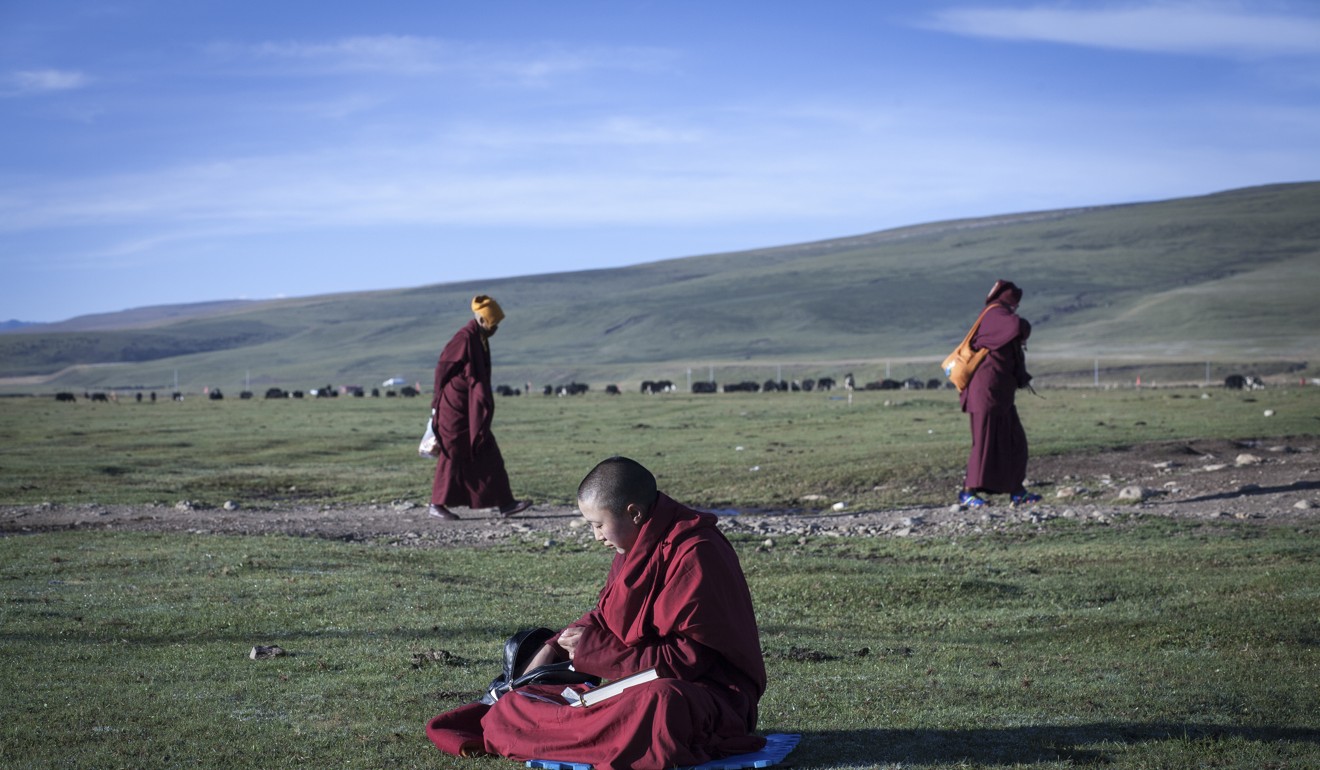
Sichuan’s remote Yarchen Gar monastery, where Buddhist monks and nuns suffer on the path to enlightenment
•After a two-year ban, visitors are again allowed to visit, but under police supervision
•Hard-to-reach monastery’s 10,000-strong population is still growing
High in the mountains of Sichuan province, more than 10,000 Buddhist monks and nuns live in the austere surroundings of the Yarchen Gar monastery. Here, they follow the teachings of leader Asong Tulku, who counsels meditation and atonement for his disciples, and is revered as a living Buddha.
Established in 1985 by Lama Achuk Rinpoche, Yarchen Gar – officially known as Yaqing Orgyan – is located in Baiyu county, in western Sichuan’s Garzê Tibetan Autonomous Prefecture. At 4,000 metres above sea level the difficult-to-reach monastery boasts one of the largest congregations of monks and nuns in the world.
How modern politics and fast money corrupted Chinese Buddhism
Because most of the devout here are women, Yarchen Gar has been called the “city of nuns”.
After a two-year ban, foreign visitors have been recently allowed to visit Yarchen Gar once again, though under a (relatively relaxed) police presence.
The number of disciples at Yarchen Gar initially grew so rapidly that its founder ordered the monks and nuns to live separately, using the river that runs through the encampment to divide the sexes. Such segregation means construction and manual work must be carried out by both men and women.

Most of the Yarchen Gar congregation are Tibetan, with few able to speak Mandarin. In Garzê, 77 per cent of the inhabitants claim ethnic Tibetan heritage, though the mix in Yarchen Gar itself is not clear, with pilgrims, monks and nuns, as well as a few tourists, coming and going.
Between meditation sessions, young and old shop for robes, hats (yellow for the Gelug school of Tibetan Buddhism; red for the Sakya), shoes and electronic goods (many nuns wear headphones and carry smartphones), among other items sold at the stores – run by monks and nuns – dotted around the perimeter of the camp.

Even with these modern conveniences, however, life is still hard for the nuns – and potentially dangerous. Toilets are positioned over a river bank while water is collected downstream for personal sanitation, washing clothes and food preparation, making typhoid a real threat. But efforts are being made to modernise, with rickety wooden toilets being replaced by more stable, concrete outhouses.
Despite improvements, hardship remains fundamental to the philosophy at Yarchen Gar. For 100 days every winter, each nun will inhabit a hut, measuring about one square metre, on a hillside on the perimeter of the encampment, to meditate while enduring sub-zero temperatures.









